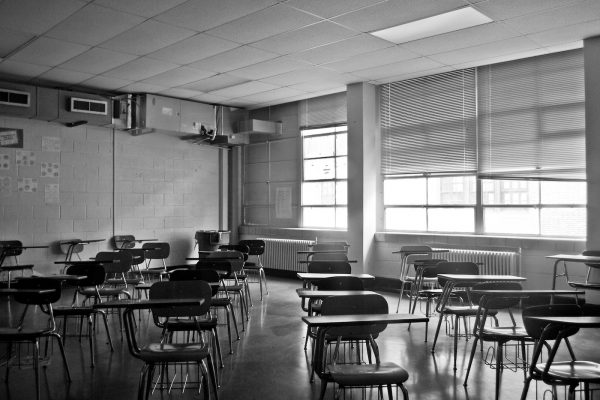At a struggling urban school, addressing students’ emotional needs is as important as devising a strong lesson plan, so every teacher needs to be part social worker. But despite their best efforts to balance teaching with administering TLC, teachers do not have much recourse beyond what occurs in the classroom. Schools that recognize this, and support teachers accordingly, are able to educate students more effectively. Some big districts, it seems, are starting to take note.
On October 1, New York City Schools Chancellor Carmen Fariña announced that the city’s schools would no longer be evaluated using letter grades, ditching a Bloomberg-era system based largely on standardized test scores and replacing it with a comprehensive survey aimed at gauging a school’s real impact on students. The new evaluation, Fariña said, looks for “rigorous instruction, [a] supportive environment, collaborative teachers, effective leadership, strong family ties, and a culture of continuous learning and trust.” In a district of 1.1 million students, this change is seismic. Fariña’s acknowledgement that “schools have unique qualities that cannot be captured in a letter grade” is encouraging, and it represents a broader movement away from the teach-to-test approach spawned by the No Child Left Behind Act. But her new system needs to go much deeper.
A wealth of recent research has shown that this type of holistic approach is badly needed at the student level. Struggling students need educators who recognize them as individuals with diverse needs. Programs that emphasize this notion—those that “embrace a ‘whole child’ perspective that recognizes the importance of a child’s health and safety, socio-emotional development, behavior, and relationships to his or her educational success”—consistently improve students’ academic achievement.
Identifying causes of student behavior and poor classroom functioning is central to this approach. Often, inability to function in school is the result of extreme stress caused by chaotic home lives. Stress is consistently misidentified and misdiagnosed as other disorders such as Attention Deficit Hyperactivity Disorder (ADHD) and Oppositional Defiance Disorder (ODD), a revelation that has partially helped explain the huge rise in diagnoses of ADHD and ODD in the last few decades. Urban youth labeled with these disorders often live in extremely stressful home environments, and this has profound long-term consequences for cognitive growth.
Nadine Burke Harris, a physician who has studied the effects of stress on the brain, likens these consequences to a Darwinian response. “So you can either fight the bear or run from the bear. That's kind of your fight or flight system,” she explained on a 2012 episode of This American Life. “And that's really good if you're in a forest and there's a bear. The problem is when that bear comes home from the bar every night. Right? And for a lot of these kids, what happens is that this system, this fight or flight response, which is an emergency response in your body, it's activated over and over and over again.” Eventually, this state becomes the norm.
Unsurprisingly, a brain that is constantly alert to danger cannot function well in a classroom. Stress hinders the development of the prefrontal cortex, the part of the brain that handles cognitive function and self-regulation. Paul Tough, author of the terrific book How Children Succeed, explains this link most succinctly: “Children who grow up in stressful environments generally find it harder to concentrate, harder to sit still, harder to rebound from disappointments, and harder to follow directions.”
Teachers need to be aware of these issues so that they can respond appropriately to disruptive behavior. Knowing that a student sits down to homework every night with his parents or siblings screaming at each other in the background or must read for English class while tending to her baby sister helps teachers make adjustments on the fly. As a 9th grade teacher at a charter school in Washington D.C., I regularly greeted students arriving in first period fresh off a heated argument with a parent, an incident with a student from a rival school, or a night of two hours’ sleep. In cases where I had even basic information from social workers about these circumstances, my interactions with students were vastly more productive. Adjustments in my reactions to behaviors—a 30-second hallway chat with a kid wreaking havoc in class, a decision to let him off the hook for homework after a rough night, a pass to work privately in an empty classroom—helped me establish a safe learning environment for all, and in some cases helped avoid errant diagnoses for kids who were simply stressed out.
Over time, teachers use small bits of information to build go-to approaches for individual students that help keep them in the classroom. Even small instructional quirks can be factors in how a student functions. “There are a lot of times when if a kid is experiencing a lot of stress at home, certain things in the classroom would exacerbate that—like cold calling, or doing an assignment that uses sensitive themes for that kid,” says Audrey Blute, a former colleague. “The more a teacher knows, the more you start trying to educate yourself, and build your toolkit. Then you reach for this toolkit when you have a new student with new problems.”
Of course, one way for a teacher to learn what a student experiences outside school is to visit his or her home. Home-visit programs for teachers are standard in some school districts, and are known to improve attendance, suspension and expulsion rates, and test scores. During my tenure in Washington, Teach For America partnered with the Flamboyan Foundation and the Parent-Teacher Home Visit Project (PTHVP) to connect teachers with families. There was consensus among colleagues who made home visits that this benefited their students and relationships with parents.
But this practice is not a priority for most teachers, and some schools actually discourage it; my school, rightfully concerned about invading the privacy of our predominantly-Latino-immigrant population, forbade home visits.
The home visit option, therefore, must be just part of broader efforts by schools to incorporate home life and emotional considerations into education. Some schools have already embraced this approach: nearly 3,000 elementary and high schools employ Integrated Student Supports (ISS), programs that employ both the “whole-child” mindset—“recognizing that children’s development includes multiple domains, including health, educational achievement and cognitive attainment, social and emotional outcomes, and behavior”—and a “child-centered” focus, stressing that “each individual child has unique developmental needs, interests and accomplishments.” The success of these programs, if they or similar efforts are to be implemented widely in our lowest-performing school districts, will depend on how well teachers are informed of the factors at play in their students’ lives.
As we move away from the standardized-test-heavy education model, we must erect in its stead a system that recognizes individuality and addresses emotional wellbeing. Knowledge about home life alone will not fix education in America; traditional factors like funding, class sizes and teacher evaluation are equally crucial. But to build a generation of urban students who can read, write, and count on grade level, we need teachers who can keep them at their desks. And here, information is golden.








